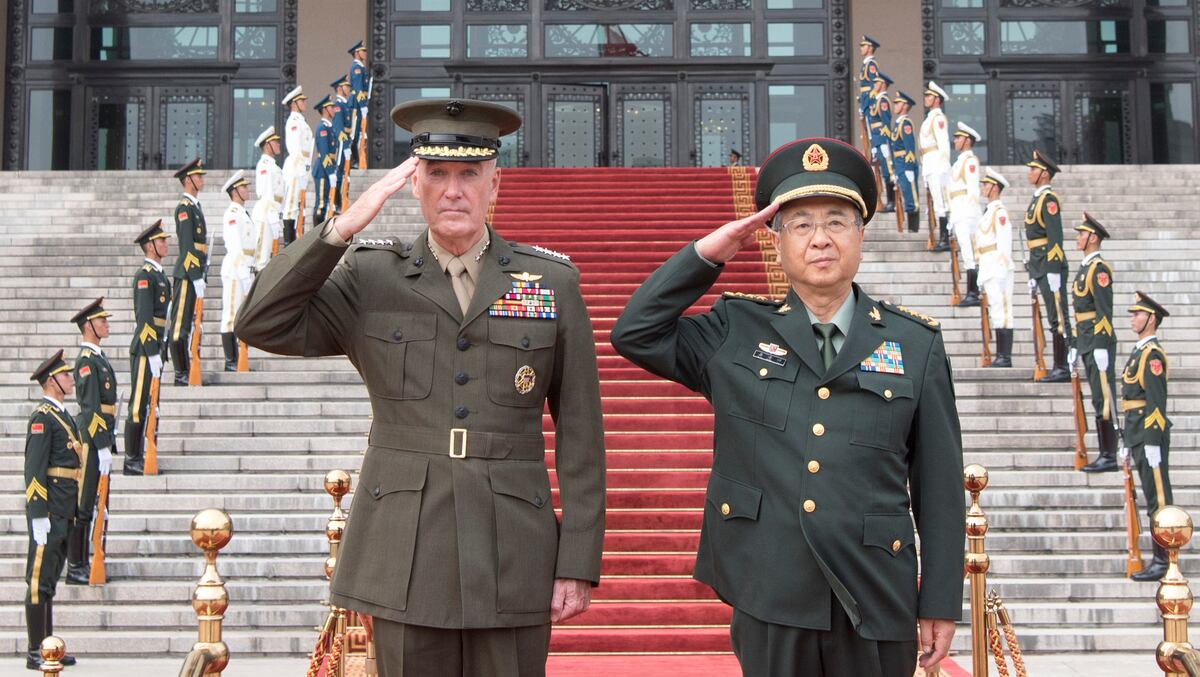If the U.S. is truly in a great power competition with China, it must realize that now more than ever it needs its allies — and in different ways than in the past.
Our current industrial relationship with our allies is grounded in the Cold War experience, where a technologically dominant U.S. decides whether to grant the privilege of industrial cooperation in exchange for everlasting control of whatever evolves from that relationship, through a labyrinth of a technology transfer system.
As U.S. technological dominance diminishes and the threat from China and Russia grows stronger, a true allied partnership will need to be formed — one that comes with fewer U.S.-mandated controls in order to incentivize greater defense-industrial collaboration. The establishment of such a partnership should not be not based on some muddle-headed call for cooperation for cooperation’s sake, but because it is in the United States’ national security interest to do so.
RELATED

The U.S. took an innovation holiday after the end of the Cold War, and so the past three decades have led to 95 percent of research and development now being conducted by commercial and global actors, rather than the American government. As a result, the U.S. is in the process of losing its technological superiority, and in many areas has already lost this dominance — whether it is from our adversaries’ asymmetric developments, commercial advances in artificial intelligence, data analytics or robotics, or niche military advancements made by our allies.
In the future, the U.S. will need to tap into a larger base of scientists and engineers to compete against the innovation potential of an adversary like China, which is four times our size, has embraced civil-military integration of the defense market and will reverse engineer whatever it can’t steal.
This larger base currently exists in the globalized commercial marketplace and within our closest allies, but the barriers to accessing this innovation are so great that it is likely that adversaries will benefit from the technologies created there before the U.S. can.
One of the most significant barriers to making this all work is a U.S. export-control process that made sense during a time of American military technological dominance, but will become an increasing threat to national security in a time of technological decline.
This is because U.S. export controls incentivize countries and companies to hold back their best technologies so as not to limit their ability to use or sell solutions based on that technology in the future. Cooperation with the U.S. triggers the so-called taint of the International Traffic in Arms Regulations regime, and the extraterritorial application of American export controls.
RELATED

To avoid these constraints, the rational solution is just not to cooperate. Increasingly, the Department of Defense will be forced into replicating needed technologies already available on the global market. This will take away valuable resources that could be used on more unique defense technological solutions, such as hypersonic or directed-energy weapons.
Put simply, the Pentagon faces a dilemma. It needs a trusted industrial base, but this base needs to be broader in depth and more innovative than the one it currently relies on for military needs.
But where to start? One option is to take advantage of the recent congressional expansion of the definition of the national technology and industrial base, or NTIB, which now includes Australia and the United Kingdom, in addition to Canada and the United States. The NTIB is the long-standing legal construct for U.S. industrial-base planning, designed to support the National Defense Strategy. As that strategy has changed to reflect a new great power competition, the legal expansion to a cooperative of four nations should reflect that change as well.
The expanded NTIB was designed by its architect, the late Sen. John McCain of Arizona, to allow for the opportunity to establish an innovative, trusted community within which new concepts of technology sharing and international cooperation could be tested in order to meet the emerging threats that face the U.S. and its allies. (The author worked for McCain during this period.)
This goal could be accomplished by establishing and testing — within a defined trusted community of firms — a stronger NTIB ITAR waiver than the one currently used by Canada; enhancing the use of program licensing; establishing exemptions to the requirements for technical assistance agreements; or just making it easier for NTIB countries to maintain and operate U.S. systems without an export license.
Lessons learned from any NTIB reform could eventually be applied to Silicon Valley and other close allies, as they ironically face the same export control process barriers if they want to help support the DoD’s mission by bringing in more advanced technology than is currently available to the department.
While broader reforms are likely necessary, if the United States cannot develop a harmonized industrial strategy and a technology control system that works with the U.K., Australia and Canada, it has no hope of doing so with its other allies — or for that matter with globalized commercial companies that also operate in places like Sydney, Waterloo or Cambridge in the U.K..
An autarkic, go-it-alone strategy will eventually leave the United States to compete on its own, as allies and the commercial marketplace hold back better technology out of fear of getting entangled in the U.S. export-control system. Meanwhile, China will be doing its best to buy, steal and replicate this technology and to incorporate it into its own military systems.
This is not a winning strategy. It’s time for a new one.
Bill Greenwalt is a former professional staff member for the Senate Armed Services Committee and a former deputy undersecretary of defense for industrial policy. He is the author of a forthcoming study with the Atlantic Council on America’s technology industrial base in the context of great power competition.








